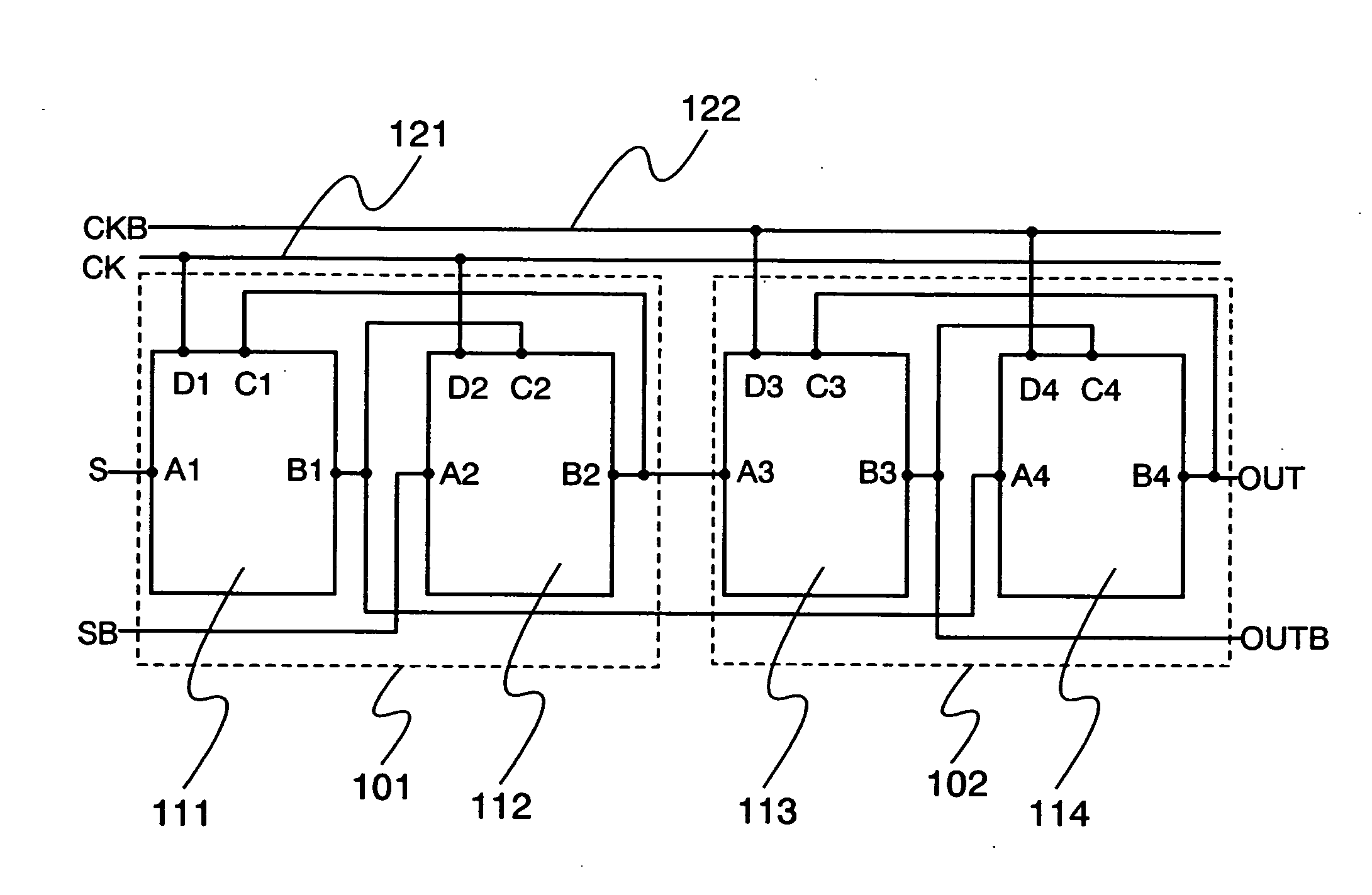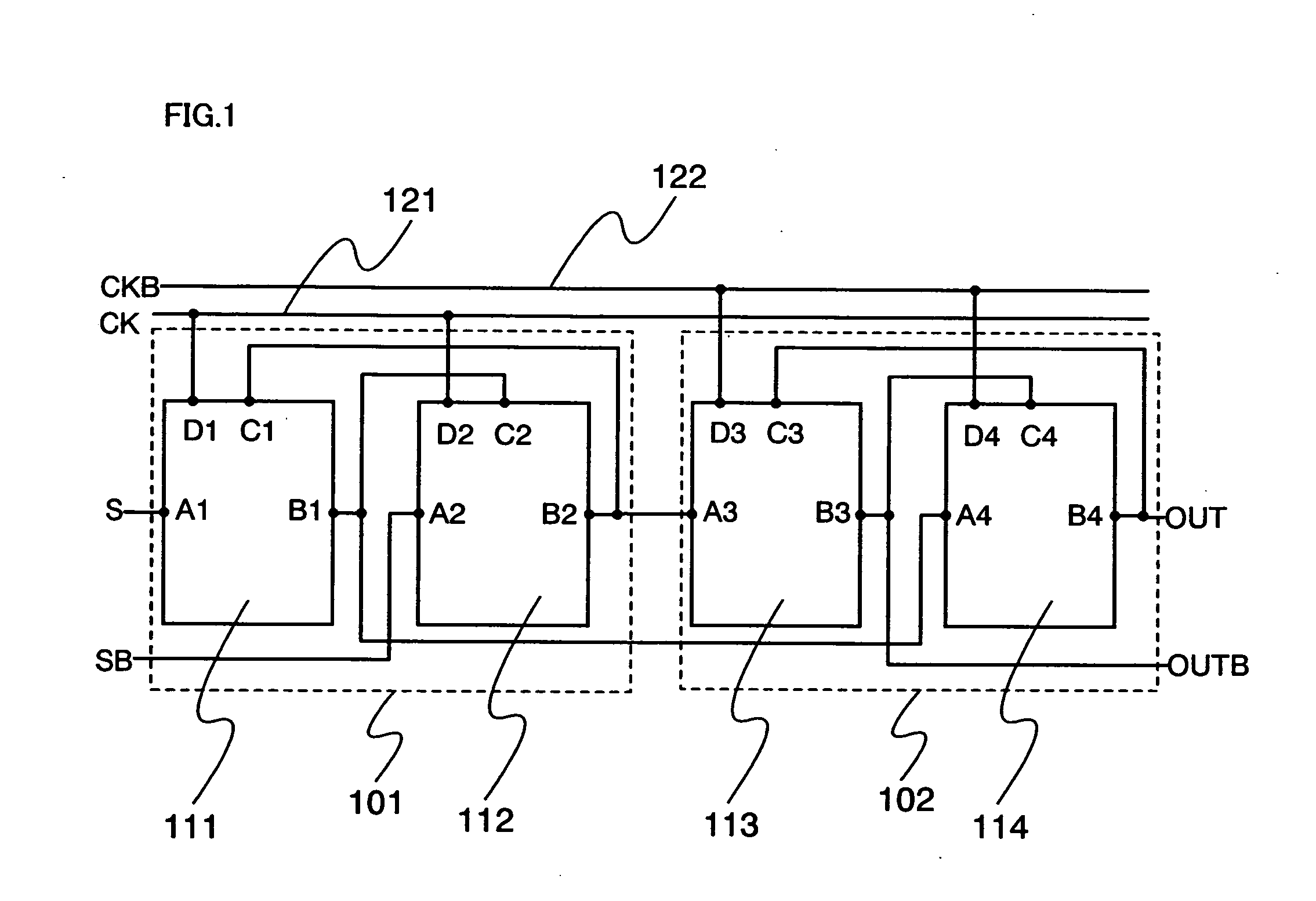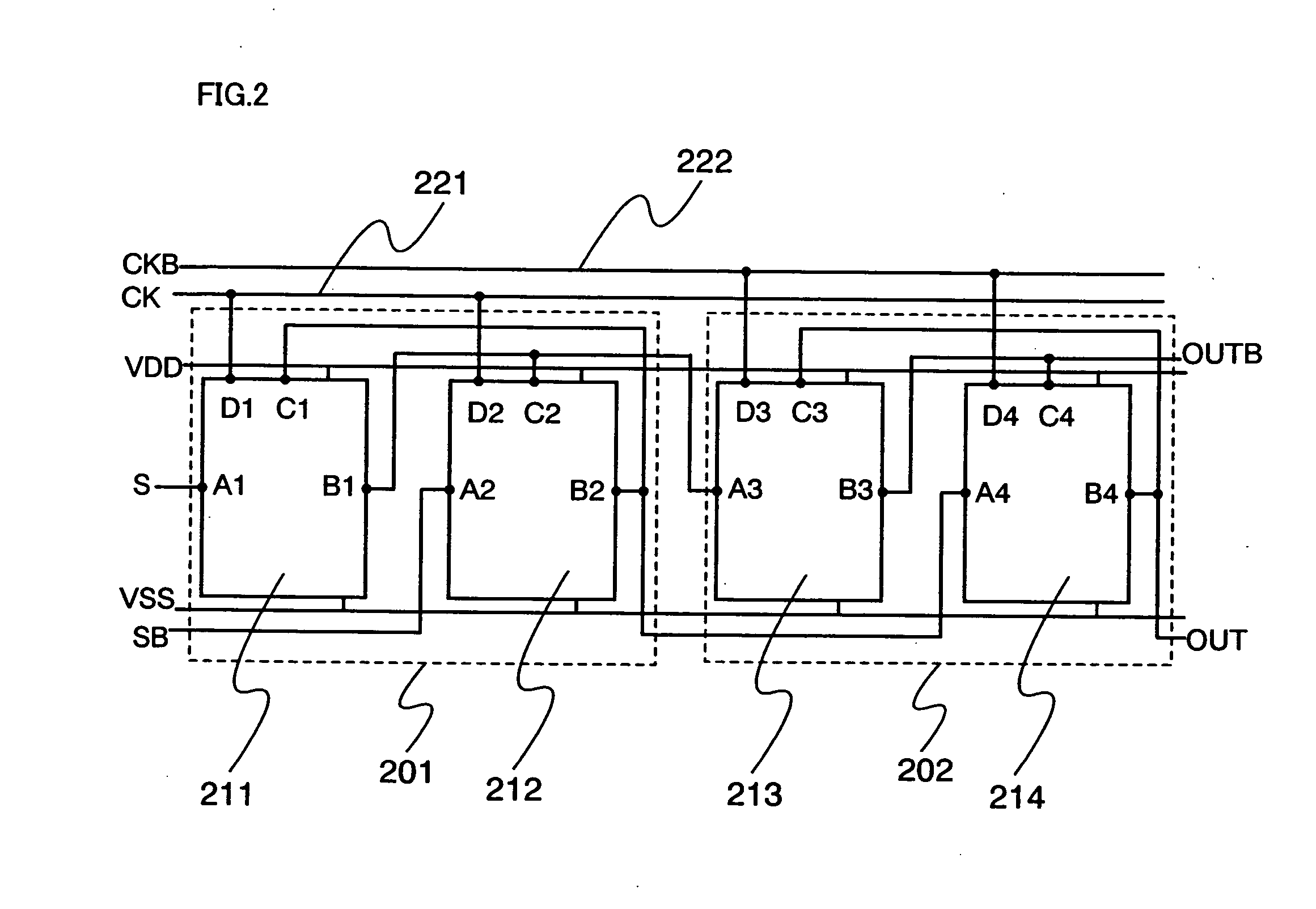Shift register, display device, and electronic device
a shift register and display device technology, applied in the field of shift registers, can solve the problems of increasing reducing the frequency property, and increasing the total size of the device casing, so as to achieve the effect of reducing the occupation area of the shift register over the substra
- Summary
- Abstract
- Description
- Claims
- Application Information
AI Technical Summary
Benefits of technology
Problems solved by technology
Method used
Image
Examples
embodiment mode 1
[0024]FIG. 1 is a circuit diagram showing one mode of a shift register of the present invention. In FIG. 1, a register 101 of a (2n−1)-th stage (n is an arbitrary integer number, m is the total number of stages provided in a shift register, m≧2n≧n) and a register 102 of a 2n-th stage are shown. The register 101 includes a first clocked inverter 111 and a second clocked inverter 112, and the register 102 includes a first clocked inverter 113 and a second clocked inverter 114. These clocked inverters are each connected to a high potential power source VDD and a low potential power source VSS.
[0025] The first clocked inverter 111 has an input terminal A1, an output terminal B1, an input terminal C1, and an input terminal D1; the second clocked inverter 112 has an input terminal A2, an output terminal B2, an input terminal C2, and an input terminal D2; the first clocked inverter 113 has an input terminal A3, an output terminal B3, an input terminal C3, and an input terminal D3, and the...
embodiment mode 2
[0037]FIG. 2 shows a circuit diagram showing one mode of a shift register of the present invention. The circuit diagram of FIG. 2 is different from that of FIG. 1 in the connection of input terminals A1, A2, A3, A4 and output terminals B1, B2, B3, B4. In FIG. 2, a register 201 at a (2n−1)-th stage (n is an arbitrary integer number, m is the total number of stages provided in a shift register, m≧2n≧n) and a register 202 at a 2n-th stage are shown. The register 201 includes a first clocked inverter 211 and a second clocked inverter 212, and the register 202 includes a first clocked inverter 213 and a second clocked inverter 214. These clocked inverters are each connected to a high potential power source VDD and a low potential power source VSS.
[0038] The first clocked inverter 211 has an input terminal A1, an output terminal B1, an input terminal C1, and an input terminal D1; the second clocked inverter 212 has an input terminal A2, an output terminal B2, an input terminal C2, and an...
embodiment mode 3
[0050] In Embodiment Mode 3, a concrete structure of each register included in the shift register described in Embodiment Mode 1 is described with reference to FIGS. 5A and 5B, exemplifying a structure of a clocked inverter. There is no particular limitation on a first clock signal, a high potential power source VDD, and a low potential power source VSS; however, for clear description, a signal at High Level of the first clock signal is e.g., 3V and a signal at Low Level is e.g., 0 V here. In addition, the high potential power source (VDD) is e.g., 7V and the low potential power source (VSS) is e.g., 0 V. In FIGS. 5A and 5B, a first clocked inverter 50 surrounded by a dotted line corresponds to the first clocked inverter 111 of Embodiment Mode 1, and a second clocked inverter 60 surrounded by a dotted line corresponds to the second clocked inverter 112 of Embodiment Mode 1.
[0051] The first clocked inverter 50 includes transistors 51 to 54 which are connected in series, and the seco...
PUM
 Login to View More
Login to View More Abstract
Description
Claims
Application Information
 Login to View More
Login to View More - R&D
- Intellectual Property
- Life Sciences
- Materials
- Tech Scout
- Unparalleled Data Quality
- Higher Quality Content
- 60% Fewer Hallucinations
Browse by: Latest US Patents, China's latest patents, Technical Efficacy Thesaurus, Application Domain, Technology Topic, Popular Technical Reports.
© 2025 PatSnap. All rights reserved.Legal|Privacy policy|Modern Slavery Act Transparency Statement|Sitemap|About US| Contact US: help@patsnap.com



